Diagnostic Tests and Invasive Procedures
RGV Vascular & Vein Institute, our priority is to prevent amputation with our innovative treatments.
Diagnostic Tests for PAD
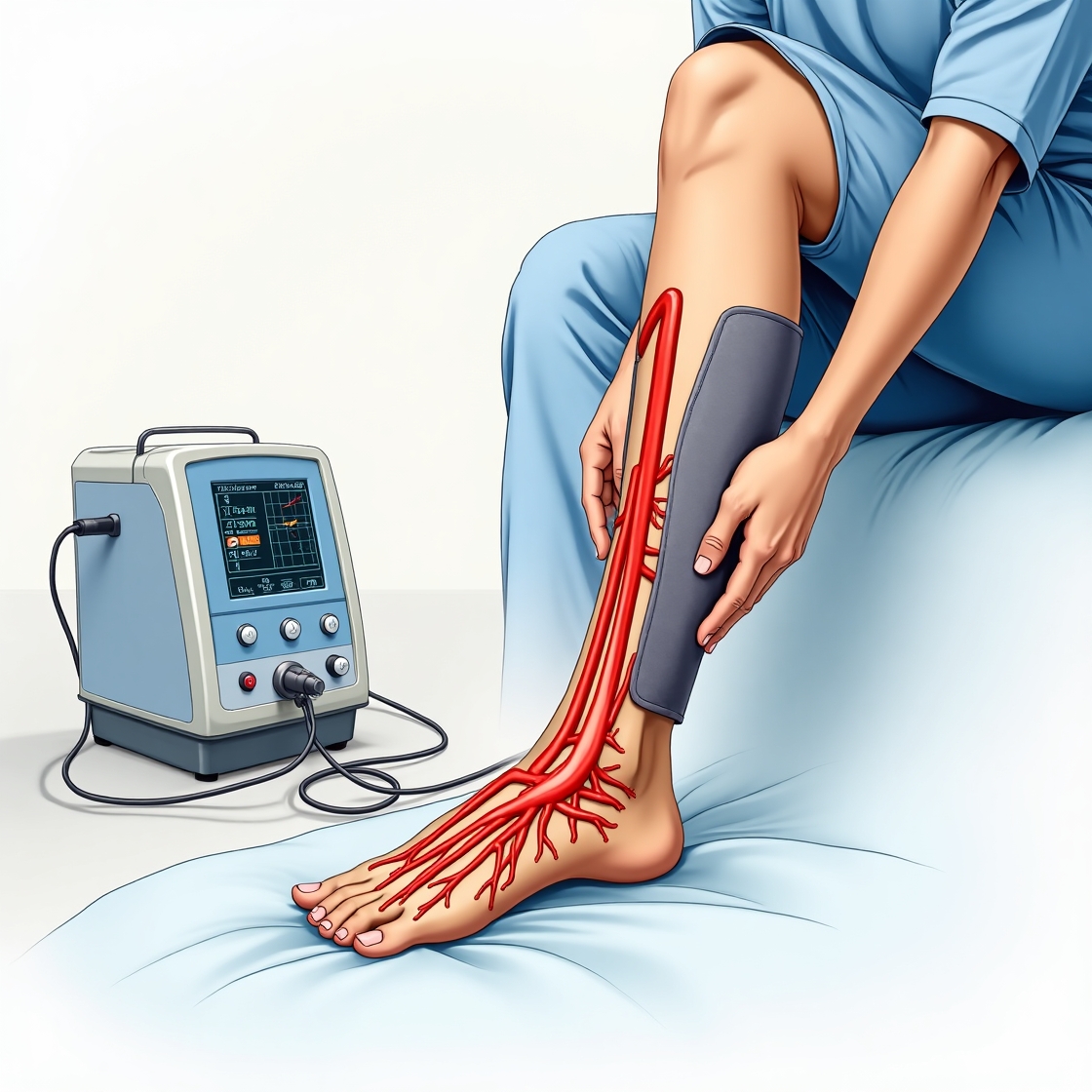
ABI or Ankle-Brachial Index
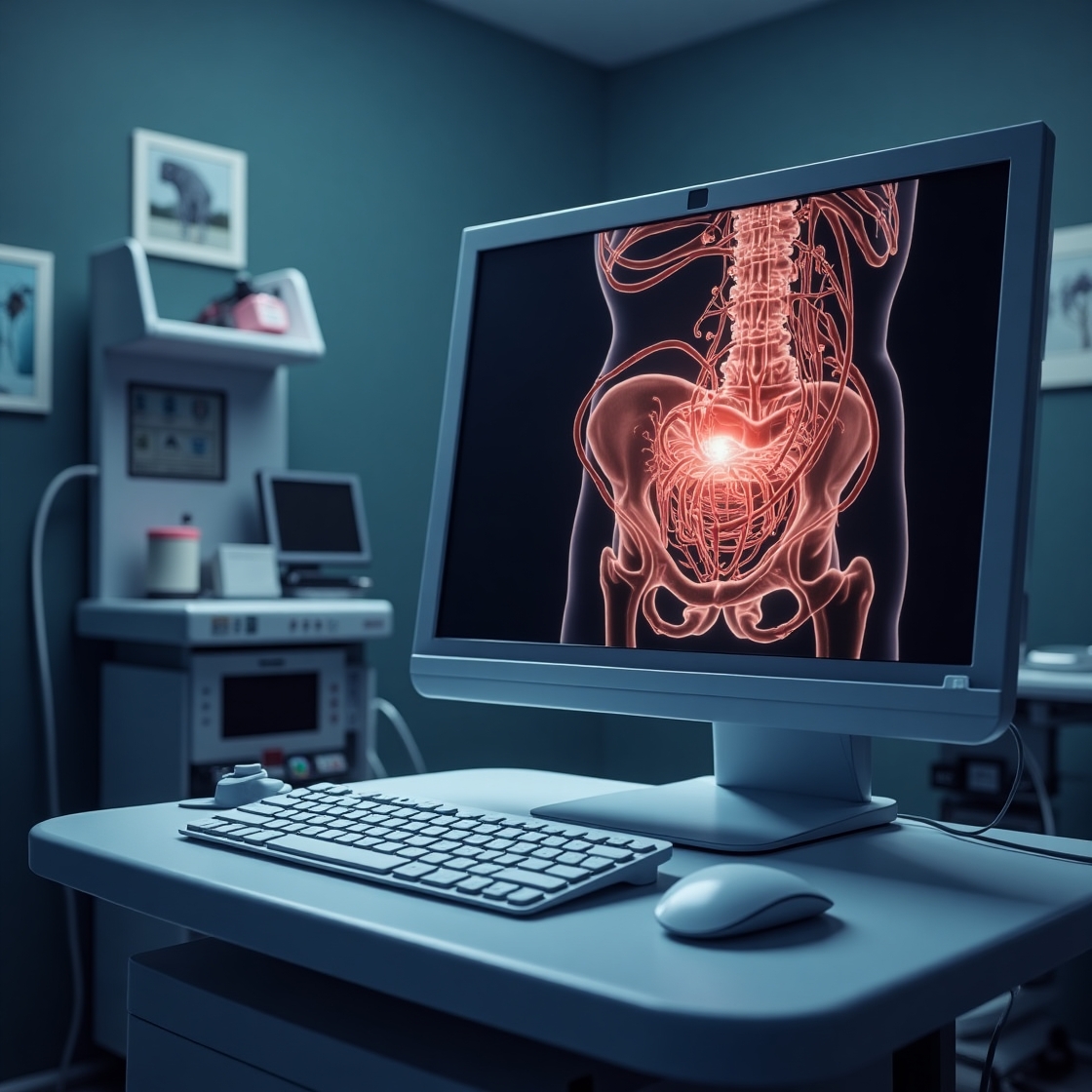
Abdominal Aorta Arterial Ultrasound
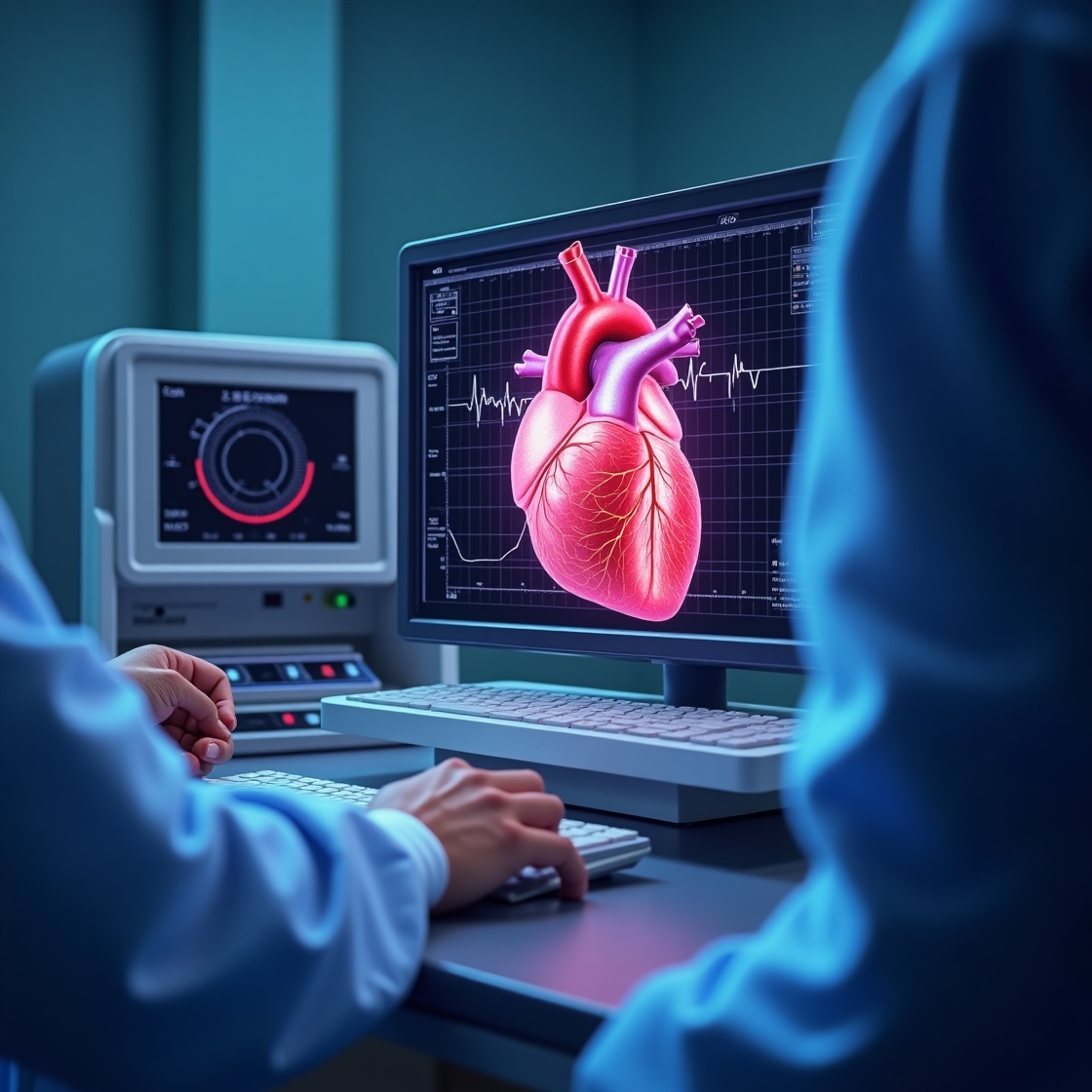
Cardiac Echocardiogram
What is an ABI?
An ABI, or Ankle-Brachial Index, is a simple, painless test that compares blood pressure in your ankles to that in your arms. This test helps doctors check how well blood flows to your legs and feet.
Why is an ABI important?
An ABI test can detect peripheral artery disease (PAD), where the arteries in your legs become narrowed or blocked. PAD can cause leg pain and difficulty walking and increase your risk of heart attack or stroke. Catching PAD early allows for timely treatment and can help prevent serious complications.
What to expect during an ABI test
The ABI test is quick, easy, and non-invasive. Here’s what you can expect:
- You’ll lie down comfortably on an exam table.
- Blood pressure cuffs will be placed on your arms and ankles.
- A small ultrasound device will measure your blood pressure in each location.
- The entire process usually takes about 10-15 minutes.
Preparing for your ABI test
There’s very little preparation needed for an ABI test. We recommend:
- Wearing loose, comfortable clothing
- Avoiding caffeine for 30 minutes before the test
- Relaxing for about 5-10 minutes before the test begins
After the ABI test
Once the test is complete, you can immediately return to your normal activities. Your doctor will review the results with you and discuss any necessary follow-up steps or treatments.
Benefits of an ABI test
An ABI test offers several significant benefits:
- Early detection of PAD
- Non-invasive and painless
- Quick and easy to perform
- Helps guide treatment decisions
- Can motivate lifestyle changes to improve circulation
Remember, your circulatory health is crucial for your overall well-being. If you have any questions about the ABI test or would like to schedule one, please don’t hesitate to contact our office. We’re here to help you stay healthy and active!
What is QuantaFlo?
QuantaFlo is a quick, painless, and non-invasive test that helps detect peripheral arterial disease (PAD) before you even notice any symptoms. It’s an innovative way to check the blood flow in your legs and feet, which can reveal important information about your overall health.
Why is QuantaFlo important?
PAD is a condition in which the arteries in your legs become narrowed, reducing blood flow. It can lead to leg pain, difficulty walking, and even an increased risk of heart problems. By detecting PAD early with QuantaFlo, we can take steps to improve your health and prevent more severe issues down the road.
What to expect during a QuantaFlo test
The QuantaFlo test is simple and comfortable:
- You’ll sit or lie down in a relaxed position.
- A small sensor will be placed on your toes and fingers.
- The device will measure blood flow in less than 5 minutes.
- That’s it! No needles, no pain, and no special preparation needed.
Benefits of QuantaFlo
QuantaFlo offers several advantages:
- Early detection of PAD, often before symptoms appear
- Quick results in less than 5 minutes
- Non-invasive and painless
- A medical assistant can perform it
- Provides actionable information for your healthcare
After your QuantaFlo test
Once the test is complete, we’ll review the results immediately. The report is easy to read, so we can discuss the findings and next steps together. We’ll create a plan to improve your circulatory health and overall well-being if needed.
Who should consider QuantaFlo?
QuantaFlo is particularly beneficial for:
- Adults over 65
- People with diabetes over 40
- Those with risk factors for heart disease
Remember, early detection is key to maintaining good health. QuantaFlo helps us catch potential problems early, giving you the best chance to stay healthy and active.
Our practice is committed to providing the most advanced and patient-friendly care. If you have questions about QuantaFlo or want to schedule a test, please don’t hesitate to ask. Your health is our priority, and we’re here to help you every step of the way!
What is a Lower Extremities Arterial Doppler Ultrasound?
A Lower Extremities Arterial Doppler Ultrasound is a painless, non-invasive test that uses sound waves to create images of the blood flow in the arteries of your legs and feet. This advanced imaging technique helps us evaluate the health of your blood vessels and detect any potential circulation problems.
Why is this test important?
This ultrasound can identify issues like peripheral artery disease (PAD) when arteries in your legs become narrowed or blocked. Detecting these problems early allows us to take action before more severe complications arise, helping you maintain mobility and overall health.
What to expect during the procedure
The ultrasound is a comfortable and straightforward process:
- You’ll lie down on an examination table.
- A warm gel will be applied to your legs and feet.
- A small handheld device (transducer) will be moved gently over your skin.
- You may hear whooshing sounds as the device detects blood flow.
- The entire procedure usually takes about 30-60 minutes.
Preparing for your ultrasound
There’s very little preparation needed for this test. We recommend:
- Wearing loose, comfortable clothing
- Avoiding smoking for at least 2 hours before the test
- Informing us of any medications you’re taking
After the ultrasound
Once the test is complete, you can immediately return to your normal activities. There’s no downtime or recovery period needed. We’ll review the results with you and discuss any necessary follow-up steps or treatments.
Benefits of Lower Extremities Arterial Doppler Ultrasound
This test offers several important advantages:
- Early detection of circulation problems
- Non-invasive and painless
- No radiation exposure
- Provides detailed images of blood flow
- Helps guide treatment decisions
Who should consider this test?
This ultrasound is particularly beneficial for people who:
- Experience leg pain or cramping during exercise
- Have diabetes or high blood pressure
- Are over 50 and have a history of smoking
- Have a family history of circulatory problems
At our practice, we believe in proactive healthcare. This ultrasound allows us to catch potential issues early, giving you the best chance to maintain your health and quality of life. If you have any questions or concerns about the Lower Extremities Arterial Doppler Ultrasound, please don’t hesitate to ask. We’re here to ensure you receive the best possible care and stay informed about your health every step of the way!
What is a Carotid Arterial Doppler Ultrasound?
A Carotid Arterial Doppler Ultrasound is a safe, painless, and non-invasive test that uses sound waves to create images of the blood flow in the carotid arteries, the main blood vessels supply oxygen-rich blood to your brain. This advanced imaging technique helps us evaluate the health of these crucial arteries and detect any potential problems that could increase your risk of stroke.
Why is this test important?
This ultrasound can identify issues like narrowed or blocked carotid arteries, which can significantly increase your risk of stroke. By detecting these problems early, we can take action to protect your brain health and overall well-being.
What to expect during the procedure
The ultrasound is a comfortable and straightforward process:
- You’ll lie down on an examination table.
- A warm gel will be applied to the sides of your neck.
- A small handheld device (transducer) will be moved gently over your skin.
- You may hear whooshing sounds as the device detects blood flow.
- The entire procedure usually takes about 30 to 45 minutes.
Preparing for your ultrasound
There’s very little preparation needed for this test. We recommend:
- Wearing a comfortable shirt with no collar or an open collar
- Avoiding necklaces or dangling earrings
- Arriving a few minutes early to relax before the test
After the ultrasound
Once the test is complete, you can immediately return to your normal activities. There’s no downtime or recovery period needed. We’ll review the results with you and discuss any necessary follow-up steps or treatments.
Benefits of Carotid Arterial Doppler Ultrasound
This test offers several important advantages:
- Early detection of stroke risk factors
- Non-invasive and painless
- No radiation exposure
- Provides detailed images of blood flow
- Helps guide treatment decisions to lower stroke risk
Who should consider this test?
This ultrasound is particularly beneficial for people who:
- Have high blood pressure or high cholesterol
- Have a history of smoking
- Have had a previous stroke or mini-stroke
- Have diabetes
- Are over 65 years old
At our practice, we believe in proactive healthcare. This ultrasound allows us to catch potential issues early, giving you the best chance to maintain your brain health and overall quality of life. If you have any questions or concerns about the Carotid Arterial Doppler Ultrasound, please don’t hesitate to ask. We’re here to ensure you receive the best possible care and stay informed about your health every step of the way!
What is an Abdominal Aorta Arterial Ultrasound?
An Abdominal Aorta Arterial Ultrasound is a safe, painless, and non-invasive test that uses sound waves to create images of your abdominal aorta. This main blood vessel supplies blood to your lower body. This important screening test can detect potentially life-threatening conditions like abdominal aortic aneurysms (AAAs) early when they’re most treatable.
Why is this test important?
This ultrasound is crucial because:
- It can detect AAAs, which are often silent but can be life-threatening if they rupture
- It’s the preferred screening method for AAAs, recommended by major health organizations
- Early detection allows for timely treatment, potentially saving lives
What to expect during the procedure
The ultrasound is a comfortable and straightforward process:
- You’ll lie down on an examination table.
- A warm gel will be applied to your abdomen.
- A technician will move a small handheld device (transducer) over your skin.
- You may hear whooshing sounds as the device detects blood flow.
- The entire procedure usually takes about 30 minutes.
Preparing for your ultrasound
There’s very little preparation needed for this test. We recommend:
- Fasting for 8-12 hours before the test (water is okay)
- Wearing loose, comfortable clothing
- Informing us of any medications you’re taking
After the ultrasound
Once the test is complete, you can immediately return to your normal activities and eat as usual. There’s no downtime or recovery period needed. We’ll review the results with you and discuss any necessary follow-up steps or treatments.
Benefits of Abdominal Aorta Arterial Ultrasound
This test offers several important advantages:
- Non-invasive and painless
- No radiation exposure
- Highly accurate in detecting AAAs
- Can be repeated as often as necessary for monitoring
- Helps guide treatment decisions to prevent serious complications
Who should consider this test?
The U.S. Preventive Services Task Force recommends this screening for:
- Men aged 65 to 75 who have ever smoked
- Men aged 65 to 75 who have never smoked, based on individual factors
Your doctor may also recommend this test if you have:
- A family history of AAAs
- High blood pressure
- Other cardiovascular risk factors
At our practice, we believe in proactive healthcare. This ultrasound allows us to catch potential issues early, giving you the best chance to maintain your health and quality of life. If you have any questions or concerns about the Abdominal Aorta Arterial Ultrasound, please don’t hesitate to ask. We’re here to ensure you receive the best possible care and stay informed about your vascular health every step of the way!
What is an Upper Extremities Arterial Doppler Ultrasound?
An Upper Extremities artery Doppler ultrasound is a safe, painless, and noninvasive test that uses sound waves to create images of blood flow in the arteries of your arms and hands. This advanced imaging technique helps us evaluate the health of these important blood vessels and detect any potential circulation problems.
Why is this test important?
This ultrasound can identify issues like peripheral artery disease (PAD) in your upper extremities, which occurs when arteries become narrowed or blocked. Detecting these problems early allows us to take action before more serious complications arise, helping you maintain proper blood flow and overall health in your arms and hands.
What to expect during the procedure
The ultrasound is a comfortable and straightforward process:
- You’ll sit or lie down in a relaxed position.
- A warm gel will be applied to your arms and hands.
- A small handheld device (transducer) will be moved gently over your skin.
- You may hear whooshing sounds as the device detects blood flow.
- The entire procedure usually takes about 30 to 45 minutes.
Preparing for your ultrasound
There’s very little preparation needed for this test. We recommend:
- Wearing loose, comfortable clothing with short sleeves or easily rolled-up sleeves
- Avoiding smoking for at least 2 hours before the test
- Informing us of any medications you’re taking
After the ultrasound
Once the test is complete, you can immediately return to your normal activities. There’s no downtime or recovery period needed. We’ll review the results with you and discuss any necessary follow-up steps or treatments.
Benefits of Upper Extremities Arterial Doppler Ultrasound
This test offers several important advantages:
- Early detection of circulation problems in arms and hands
- Non-invasive and painless
- No radiation exposure
- Provides detailed images of blood flow
- Helps guide treatment decisions to improve upper extremity health
Who should consider this test?
This ultrasound is particularly beneficial for people who:
- Experience pain, numbness, or weakness in their arms or hands
- Have diabetes or high blood pressure
- Are over 50 and have a history of smoking
- Have a family history of circulatory problems
- Have had previous injuries or surgeries in the upper extremities
At our practice, we believe in proactive healthcare. This ultrasound allows us to catch potential issues early, giving you the best chance to maintain the health of your arms and hands and improve your overall quality of life. If you have any questions or concerns about the Upper Extremities artery Doppler ultrasound, please don’t hesitate to ask. We’re here to ensure you receive the best possible care and stay informed about your health every step of the way!
What is a Cardiac Echocardiogram?
A cardiac echocardiogram, often simply called an “echo,” is a safe and painless test that uses sound waves to create detailed moving pictures of your heart. Think of it as an ultrasound of your heart, allowing doctors to see its structure and how well it’s functioning in real-time.
Why is an Echocardiogram Important?
An echocardiogram provides valuable information about your heart’s health. It helps doctors:
- Assess how well your heart is pumping
- Examine the size and shape of your heart
- Check your heart valves for any abnormalities
- Detect blood clots or tumors in your heart
- Identify various heart conditions, from mild to serious
Early detection of heart issues allows for timely treatment, potentially preventing more serious problems down the road.
What to Expect During the Procedure
The standard echocardiogram, called a transthoracic echocardiogram (TTE), is a straightforward process:
- You’ll lie down on an examination table.
- A technician will apply a warm gel to your chest.
- They’ll move a small handheld device (transducer) over your chest.
- You may hear swooshing sounds as the device captures images of your heart.
- The entire procedure usually takes 30 to 60 minutes.
You may be asked to change positions or hold your breath briefly to get better images. The test is painless and doesn’t use any radiation.
Preparing for Your Echocardiogram
There’s very little preparation needed for this test. We recommend:
- Wearing comfortable, loose-fitting clothing
- Avoiding heavy meals before the test
- Informing us of any medications you’re taking
After the Echocardiogram
Once the test is complete, you can immediately return to your normal activities. There is no downtime or recovery period. Your doctor will review the results with you and discuss any necessary follow-up steps or treatments.
Benefits of a Cardiac Echocardiogram
This test offers several important advantages:
- It’s non-invasive and painless
- There’s no radiation exposure
- It provides detailed images of your heart’s structure and function
- It can be repeated as often as necessary for monitoring
- It helps guide treatment decisions for various heart conditions
At our practice, we believe in comprehensive heart care. The echocardiogram is a powerful tool for accurately and efficiently assessing your heart health. If you have any questions or concerns about the cardiac echocardiogram, please don’t hesitate to ask. We’re here to ensure you receive the best possible care and stay informed about your heart health every step of the way!
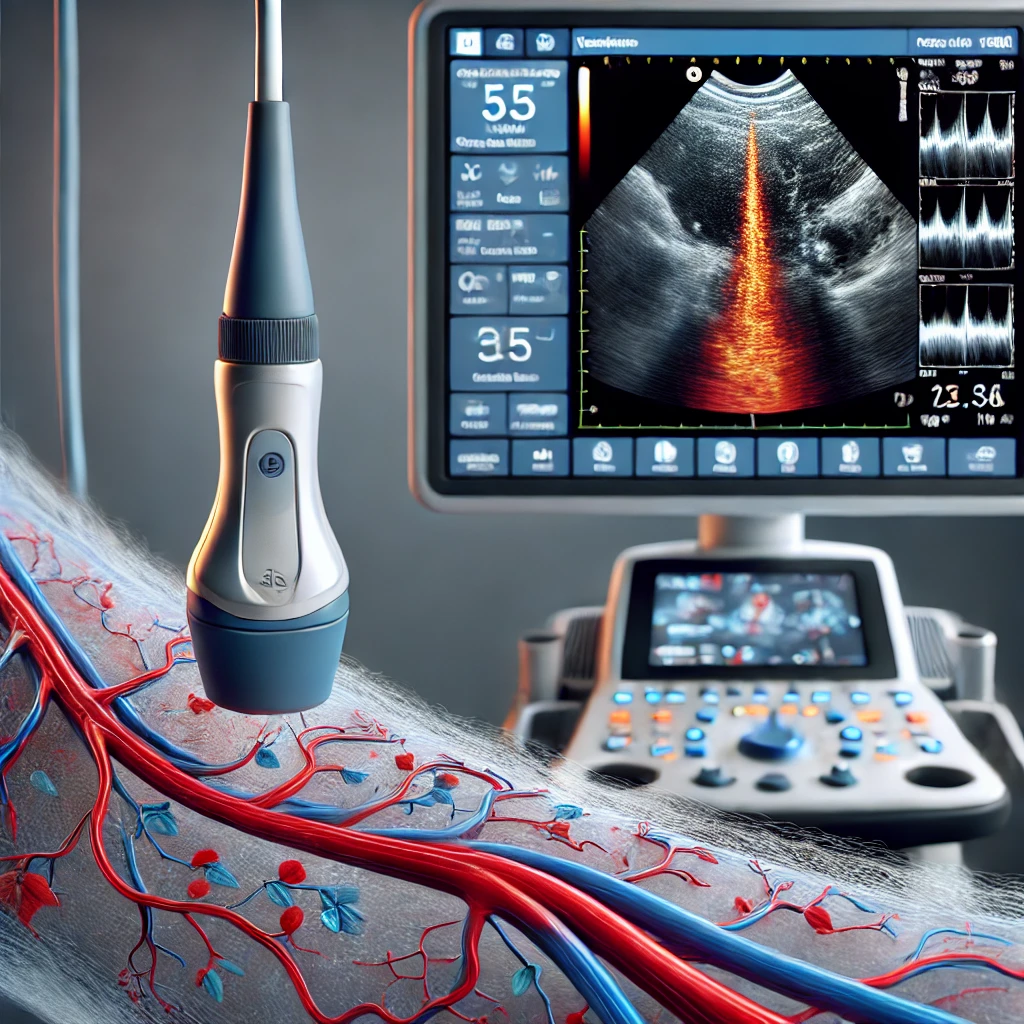
Lower Extremities Arterial Doppler Ultrasound
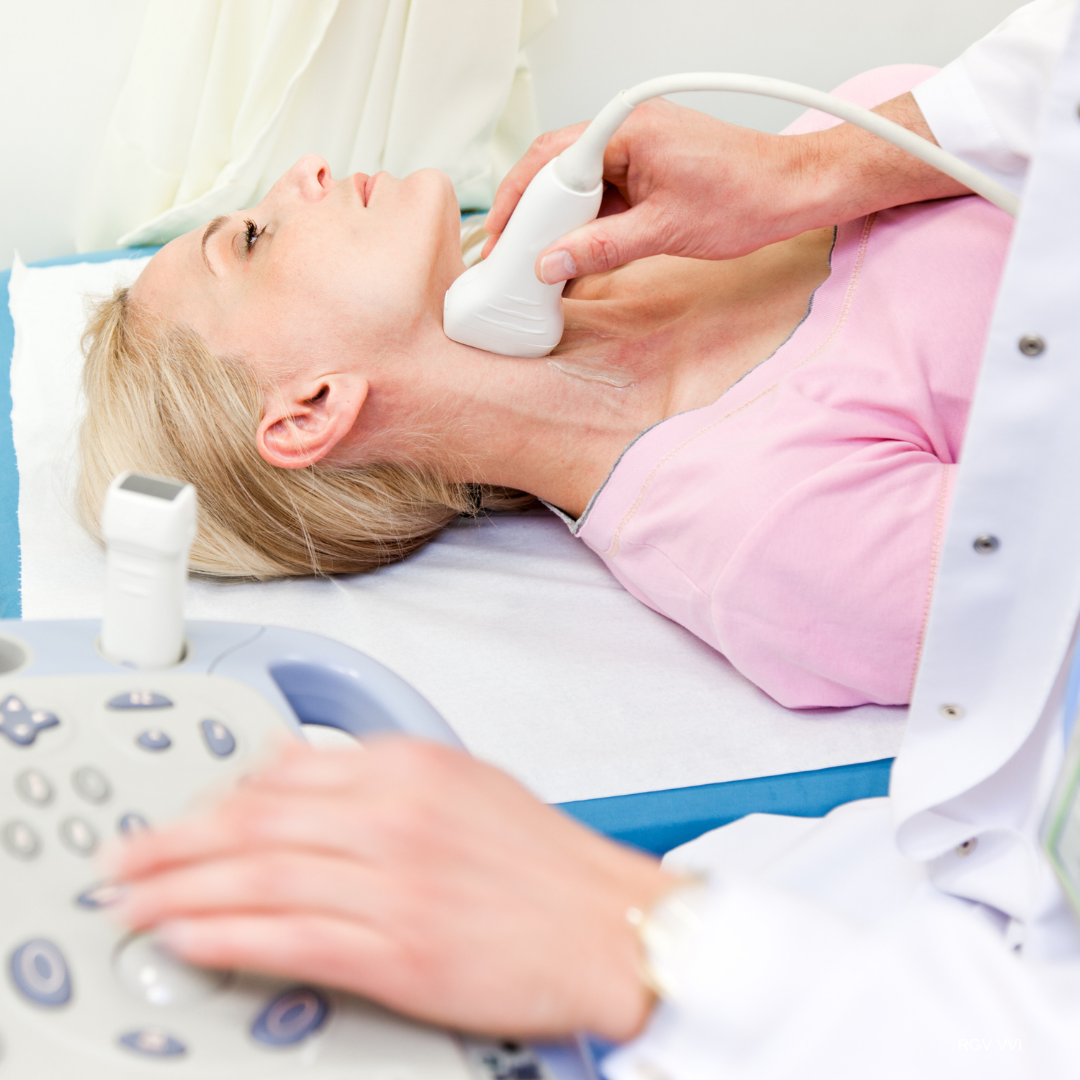
Carotid Arterial Doppler Ultrasound
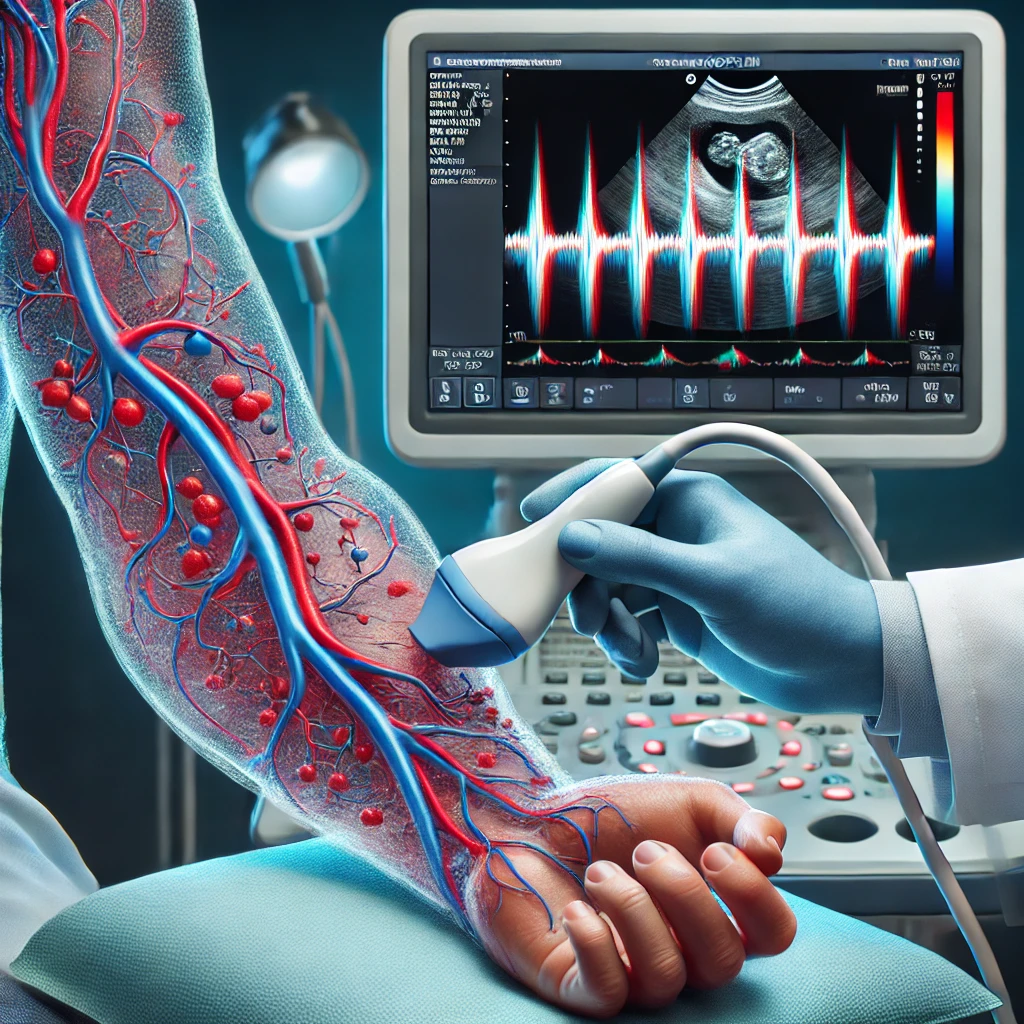
Upper Extremities Arterial Doppler Ultrasound
Diagnostic Tests Chronic Venous Disease
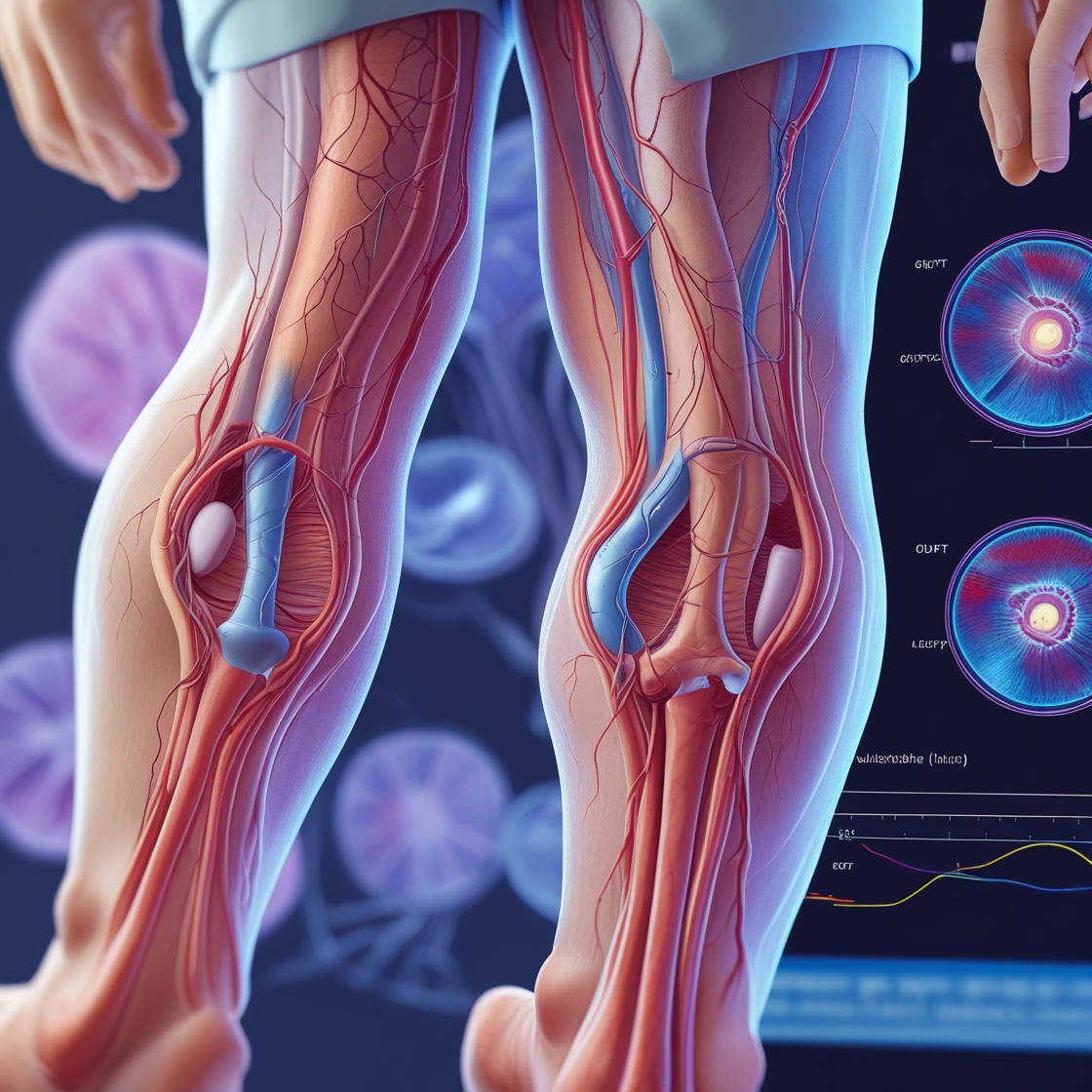
Lower Extremities Venous Ultrasound for Venous Insufficiency
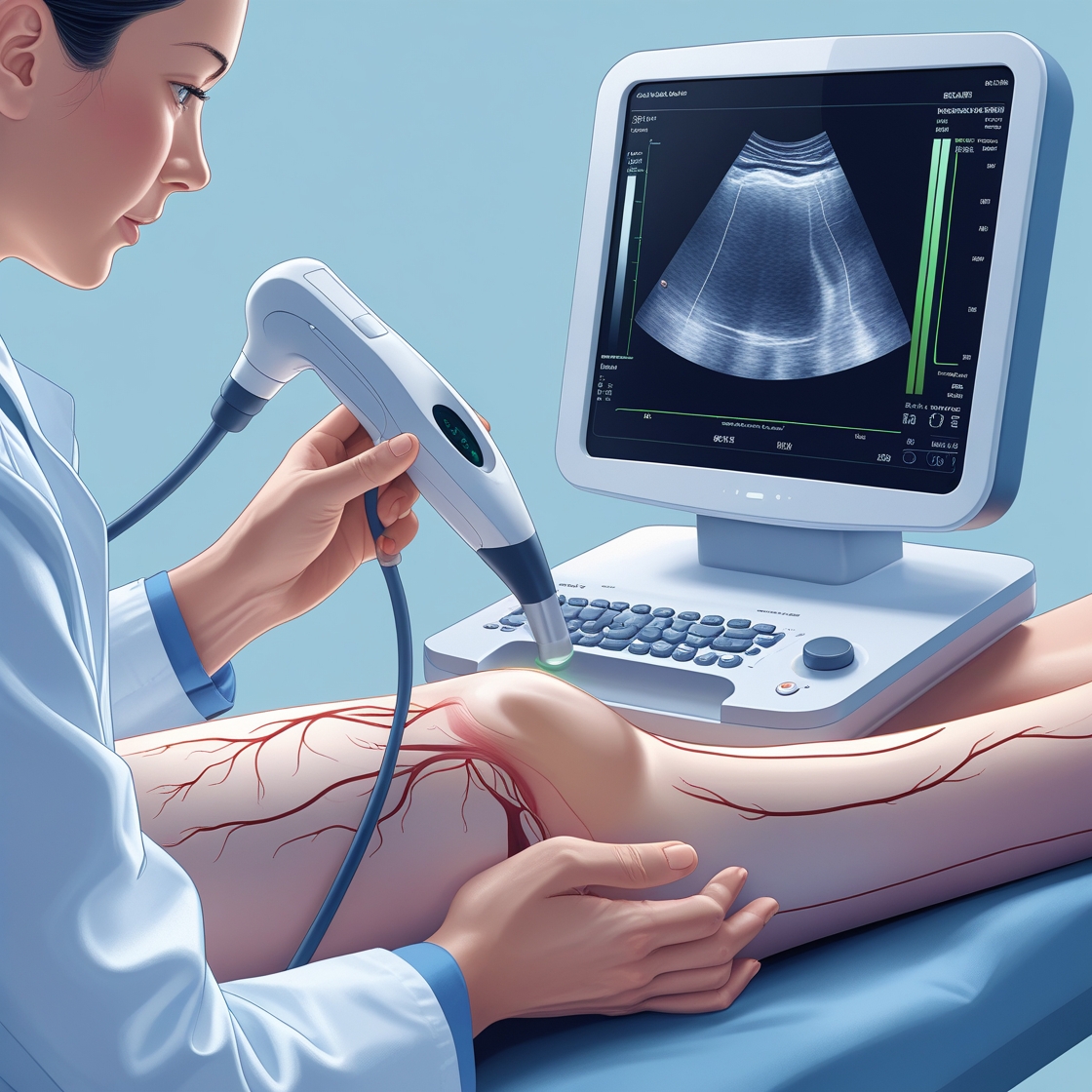
Lower Extremities Venous Ultrasound for Deep Venous Thrombosis
What is a Lower Extremities Venous Ultrasound for Venous Insufficiency?
This specialized ultrasound is a painless, noninvasive test that examines the veins in your legs while standing or slightly inclined. It helps us assess how well the blood flows back to your heart and identify any issues with your vein valves that might be causing problems.
Why is this test important?
Venous insufficiency occurs when the valves in your leg veins don’t work properly, leading to blood pooling in your legs. This can cause various symptoms and, if left untreated, may lead to more serious conditions. By performing this test, we can:
- Detect early signs of venous insufficiency
- Identify the cause of leg swelling, pain, or varicose veins
- Guide treatment decisions to improve your leg health and overall well-being
What to expect during the procedure
The ultrasound is a comfortable and straightforward process:
- You’ll stand on a platform or lie on a slightly inclined table.
- A warm gel will be applied to your legs.
- A technician will move a small handheld device (transducer) over your skin.
- You may be asked to shift your weight or perform simple movements.
- The entire procedure usually takes about 30 to 45 minutes.
Preparing for your ultrasound
There’s very little preparation needed for this test. We recommend:
- Wearing loose, comfortable clothing or shorts
- Staying hydrated before the test
- Informing us of any medications you’re taking
After the ultrasound
Once the test is complete, you can immediately return to your normal activities. There’s no downtime or recovery period needed. We’ll review the results with you and discuss any necessary follow-up steps or treatments.
Benefits of this specialized venous ultrasound
This test offers several important advantages:
- It provides a more accurate assessment of vein function compared to lying down
- Non-invasive and painless
- No radiation exposure
- It helps identify the root cause of leg discomfort or visible vein issues
- Guides personalized treatment plans for better leg health
Who should consider this test?
This ultrasound is particularly beneficial for people who:
- Experience leg pain, swelling, or heaviness
- Have visible varicose veins or spider veins
- Spend long periods standing or sitting
- Have a family history of vein problems
- Are pregnant or have been pregnant
At our practice, we’re committed to helping you maintain healthy legs and an active lifestyle. This specialized ultrasound allows us to accurately diagnose venous insufficiency and develop an effective treatment plan tailored to your needs. If you have any questions or concerns about the Lower Extremities Venous Ultrasound for Venous Insufficiency, please don’t hesitate to ask. We’re here to ensure you receive the best possible care and stay informed about your vein health every step of the way!
What is a Lower Extremities Venous Ultrasound for Deep Venous Thrombosis?
This ultrasound is a safe, painless, and non-invasive test that examines the deep veins in your legs to check for blood clots, also known as deep venous thrombosis (DVT). It uses sound waves to create detailed images of your veins, allowing us to see how blood flows through them.
Why is this test important?
Detecting DVT early is crucial because:
- Blood clots in deep veins can be serious if left untreated
- They can break loose and travel to your lungs, causing a life-threatening condition called pulmonary embolism
- Early detection allows for prompt treatment, reducing health risks
This test helps us identify DVT quickly and accurately, ensuring you receive timely care if needed.
What to expect during the procedure
The ultrasound is a comfortable and straightforward process:
- You’ll lie down on an examination table.
- A warm gel will be applied to your legs.
- A technician will move a small handheld device (transducer) over your skin.
- You may be asked to point your toes or turn your feet.
- The entire procedure usually takes about 30 to 60 minutes.
Preparing for your ultrasound
There’s very little preparation needed for this test. We recommend:
- Wearing loose, comfortable clothing or shorts
- Avoiding applying lotion to your legs on the day of the test
- Informing us of any medications you’re taking, especially blood thinners
After the ultrasound
Once the test is complete, you can immediately return to your normal activities. There’s no downtime or recovery period needed. We’ll review the results with you promptly and discuss any necessary follow-up steps or treatments.
Benefits of this venous ultrasound
This test offers several important advantages:
- Non-invasive and painless
- No radiation exposure
- Highly accurate in detecting blood clots
- Can be repeated as often as necessary for monitoring
- Helps guide treatment decisions quickly
Who should consider this test?
This ultrasound is particularly beneficial for people who:
- Have leg pain, swelling, or redness
- Recently had surgery or have been immobile for a long period
- Are pregnant or have recently given birth
- Have a family history of blood clots
- Are taking certain medications that increase clot risk
At our practice, we take the risk of DVT seriously and are committed to your health and well-being. This ultrasound allows us to quickly and accurately assess your risk and provide appropriate care. If you have any questions or concerns about the Lower Extremities Venous Ultrasound for Deep Venous Thrombosis, please don’t hesitate to ask. We’re here to ensure you receive the best possible care and stay informed about your vein health every step of the way!
What is an Iliac and IVC Venous Ultrasound?
An iliac and IVC (inferior vena cava) Venous Ultrasound is a safe, painless, and noninvasive test that examines the large veins in your lower abdomen and pelvis. This test uses sound waves to create detailed images of your iliac veins and the inferior vena cava, major blood vessels responsible for returning blood from your lower body to your heart.
Why is this test important?
This ultrasound helps us:
- Detect blood clots in these large, important veins
- Evaluate blood flow in your lower abdomen and pelvis
- Identify any abnormalities or blockages in these veins
- Assess for conditions like May-Thurner syndrome
Early detection of issues in these veins can prevent serious complications and guide appropriate treatment.
What to expect during the procedure
The ultrasound is a comfortable and straightforward process:
- You’ll lie down on an examination table.
- A warm gel will be applied to your lower abdomen and pelvic area.
- A technician will move a small handheld device (transducer) over your skin.
- You may be asked to hold your breath briefly at times.
- The entire procedure usually takes about 30 to 45 minutes.
Preparing for your ultrasound
To ensure the best possible images, we recommend:
- Fasting for 6-8 hours before the test (water is okay)
- Wearing loose, comfortable clothing
- Informing us of any medications you’re taking
After the ultrasound
Once the test is complete, you can immediately return to normal activities and eat as usual. There’s no downtime or recovery period needed. We’ll review the results with you and discuss any necessary follow-up steps or treatments.
Benefits of Iliac and IVC Venous Ultrasound
This test offers several important advantages:
- Non-invasive and painless
- No radiation exposure
- Provides detailed images of deep abdominal and pelvic veins
- Can detect issues that might not be apparent with other tests
- Helps guide treatment decisions for various vein conditions
Who should consider this test?
This ultrasound may be recommended if you:
- Have unexplained swelling in one or both legs
- Experience chronic pelvic pain
- Have a history of blood clots
- Are being evaluated for certain abdominal or pelvic conditions
- Have risk factors for venous disorders
At our practice, we believe in comprehensive vascular care. The Iliac and IVC Venous Ultrasound is a valuable tool that allows us to assess the health of these crucial veins accurately and efficiently. If you have any questions or concerns about this ultrasound, please don’t hesitate to ask. We’re here to ensure you receive the best possible care and stay informed about your vascular health every step of the way!
What is an Upper Extremities Venous Ultrasound?
An Upper Extremities Venous Ultrasound is a safe, painless, and non-invasive test that examines the veins in your arms and hands. This advanced imaging technique uses sound waves to create detailed pictures of your blood vessels, allowing us to evaluate blood flow and detect potential issues.
Why is this test important?
This ultrasound helps us:
- Detect blood clots in the veins of your arms
- Evaluate blood flow in your upper extremities
- Identify vein abnormalities or blockages
- Assess for conditions like thoracic outlet syndrome
Early detection of these issues can prevent serious complications and guide appropriate treatment, ensuring the health of your arms and hands.
What to expect during the procedure
The ultrasound is a comfortable and straightforward process:
- You’ll sit or lie down in a relaxed position.
- A warm gel will be applied to your arms and hands.
- A technician will move a small handheld device (transducer) over your skin.
- You may be asked to perform simple movements or change positions.
- The entire procedure usually takes about 30 to 45 minutes.
Preparing for your ultrasound
There’s very little preparation needed for this test. We recommend:
- Wearing loose, comfortable clothing with short sleeves or easily rolled-up sleeves
- Removing any jewelry from your arms and hands
- Informing us of any medications you’re taking
After the ultrasound
Once the test is complete, you can immediately return to your normal activities. There’s no downtime or recovery period needed. We’ll review the results with you and discuss any necessary follow-up steps or treatments.
Benefits of Upper Extremities Venous Ultrasound
This test offers several important advantages:
- Non-invasive and painless
- No radiation exposure
- Provides detailed images of arm and hand veins
- Can be repeated as often as necessary for monitoring
- Helps guide treatment decisions for various vein conditions
Who should consider this test?
This ultrasound may be recommended if you:
- Have unexplained swelling in one or both arms
- Experience arm pain or heaviness
- Have a history of blood clots
- Recently had an IV or catheter in your arm
- Are at risk for venous disorders due to medical conditions or treatments
Our practice is committed to providing comprehensive care for your vascular health. The Upper Extremities Venous Ultrasound is a valuable tool that allows us to assess the health of the veins in your arms and hands accurately and efficiently. If you have any questions or concerns about this ultrasound, please don’t hesitate to ask. We’re here to ensure you receive the best possible care and stay informed about your vascular health every step of the way!
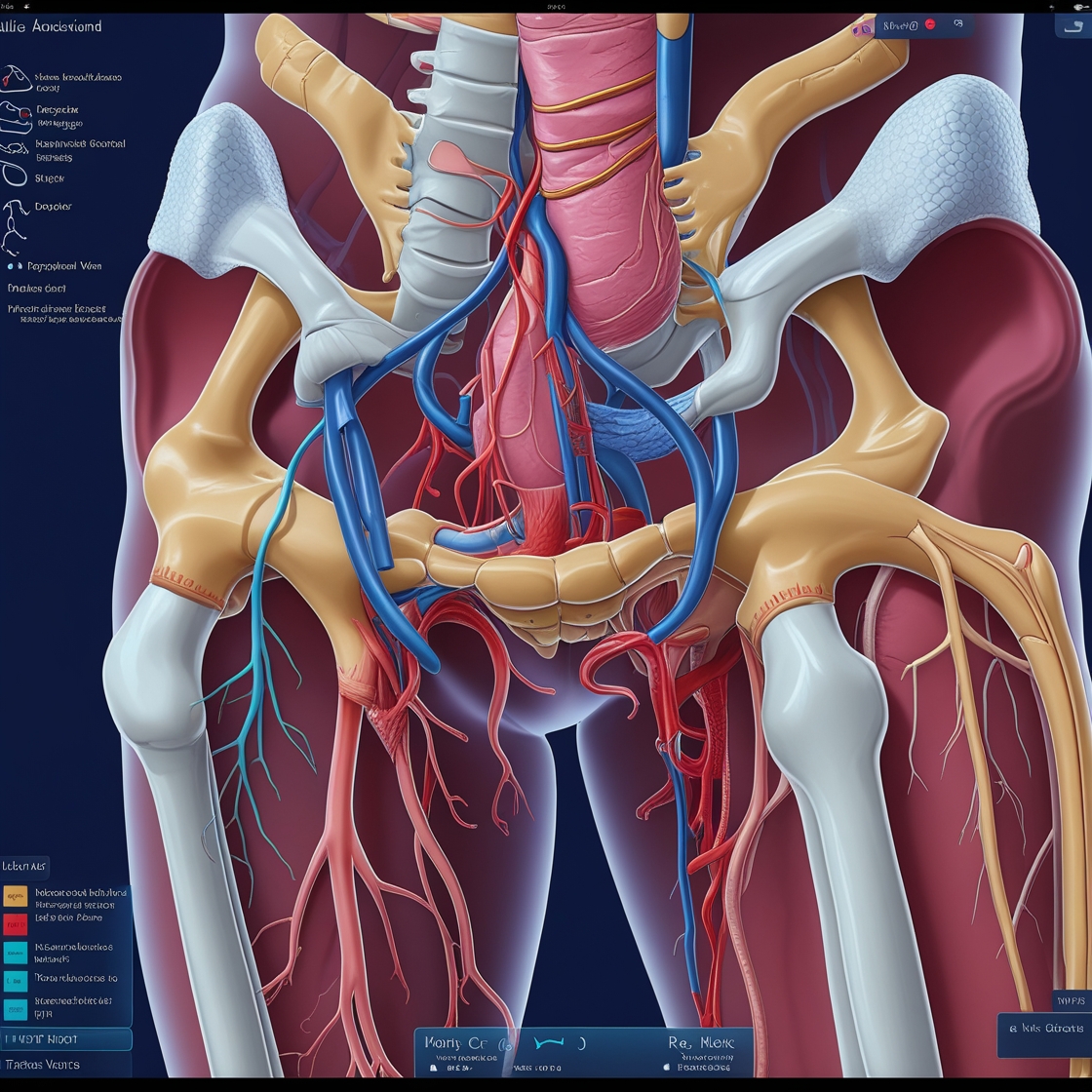
Iliac and IVC Venous Ultrasound


